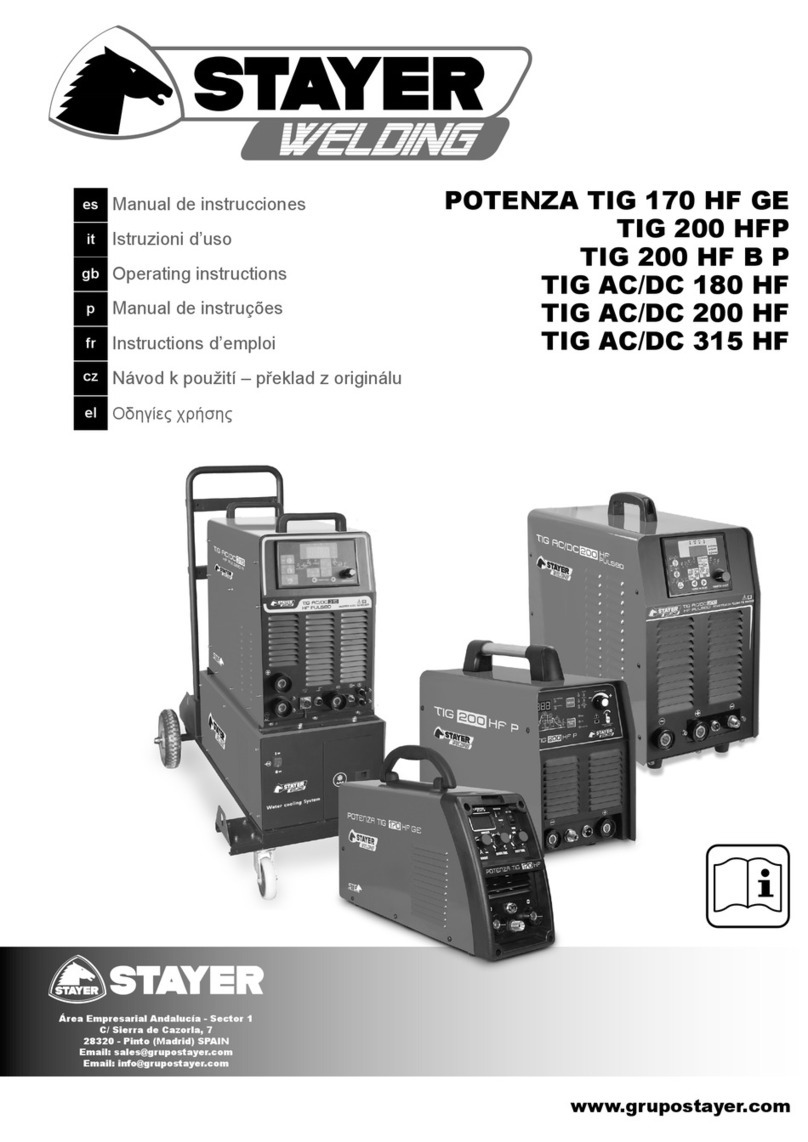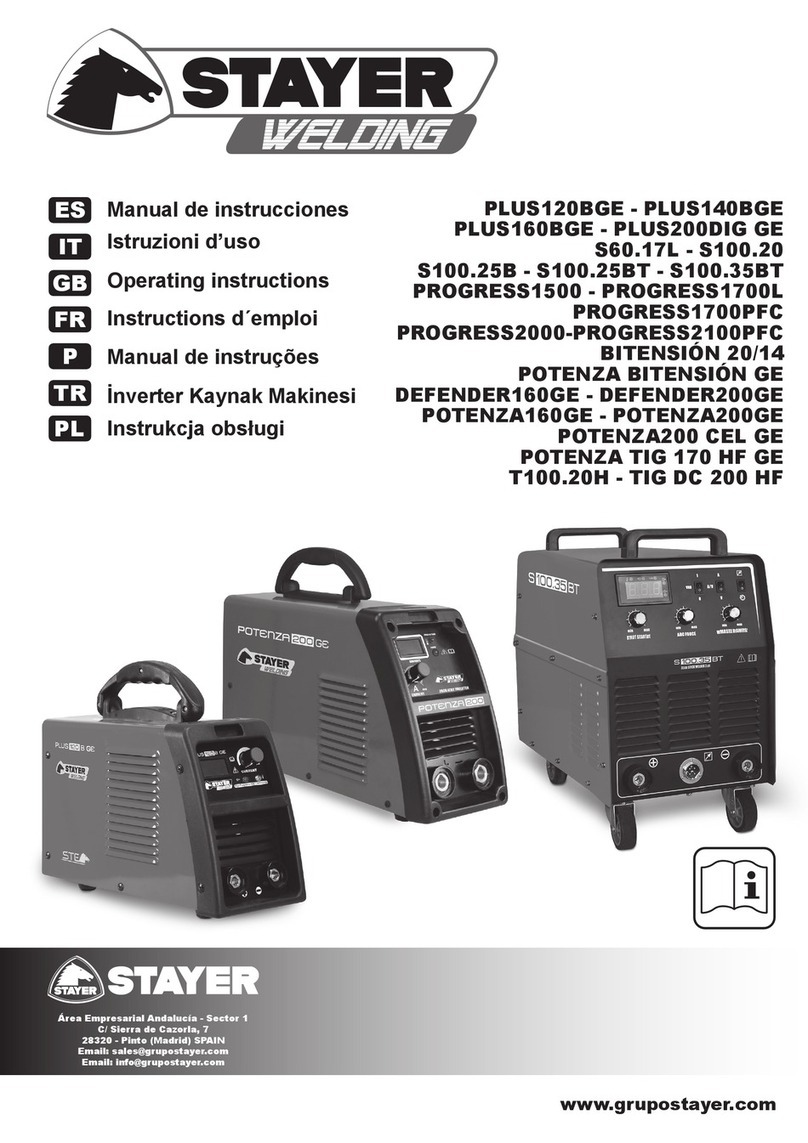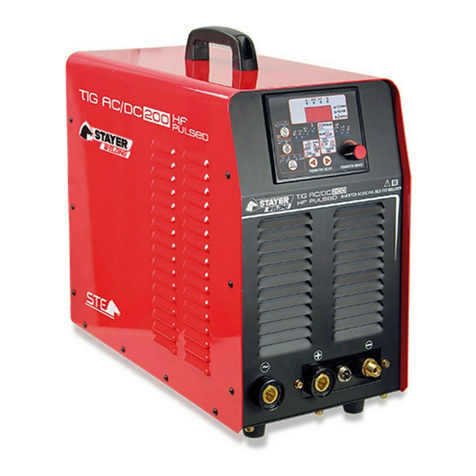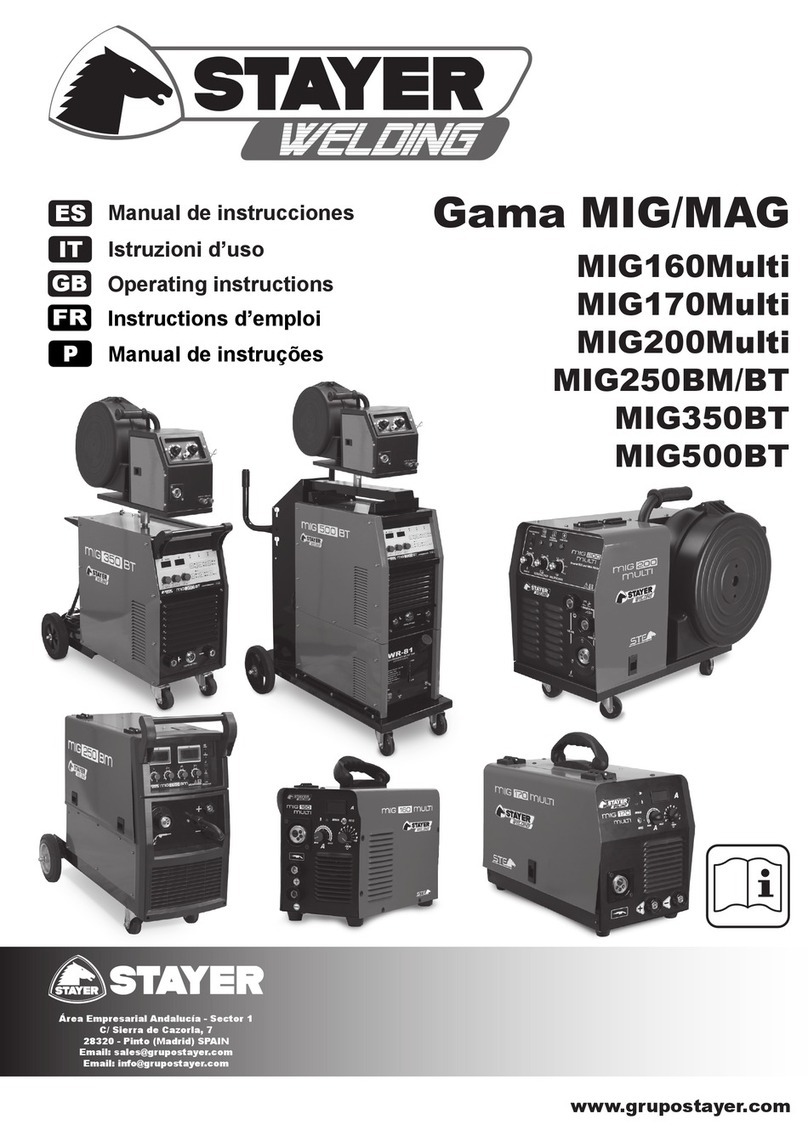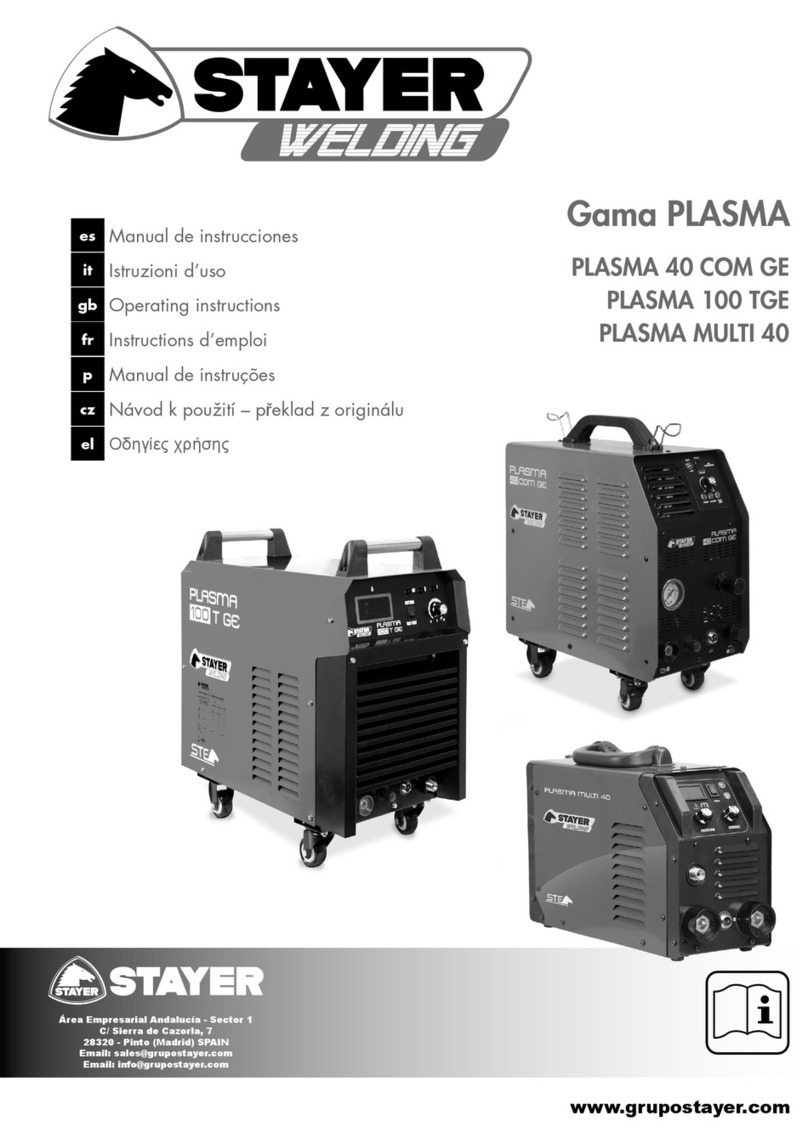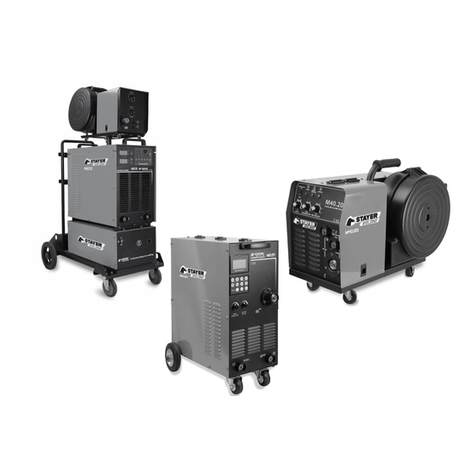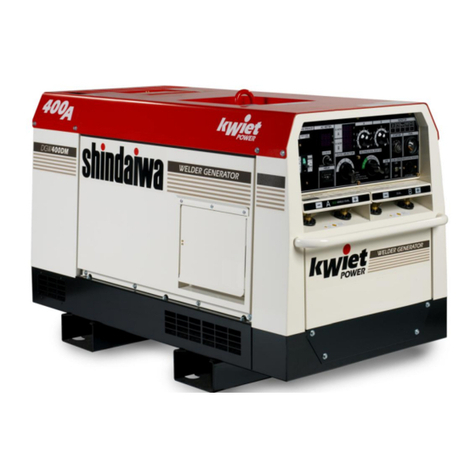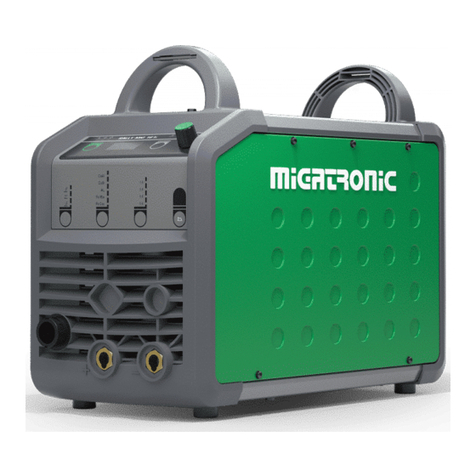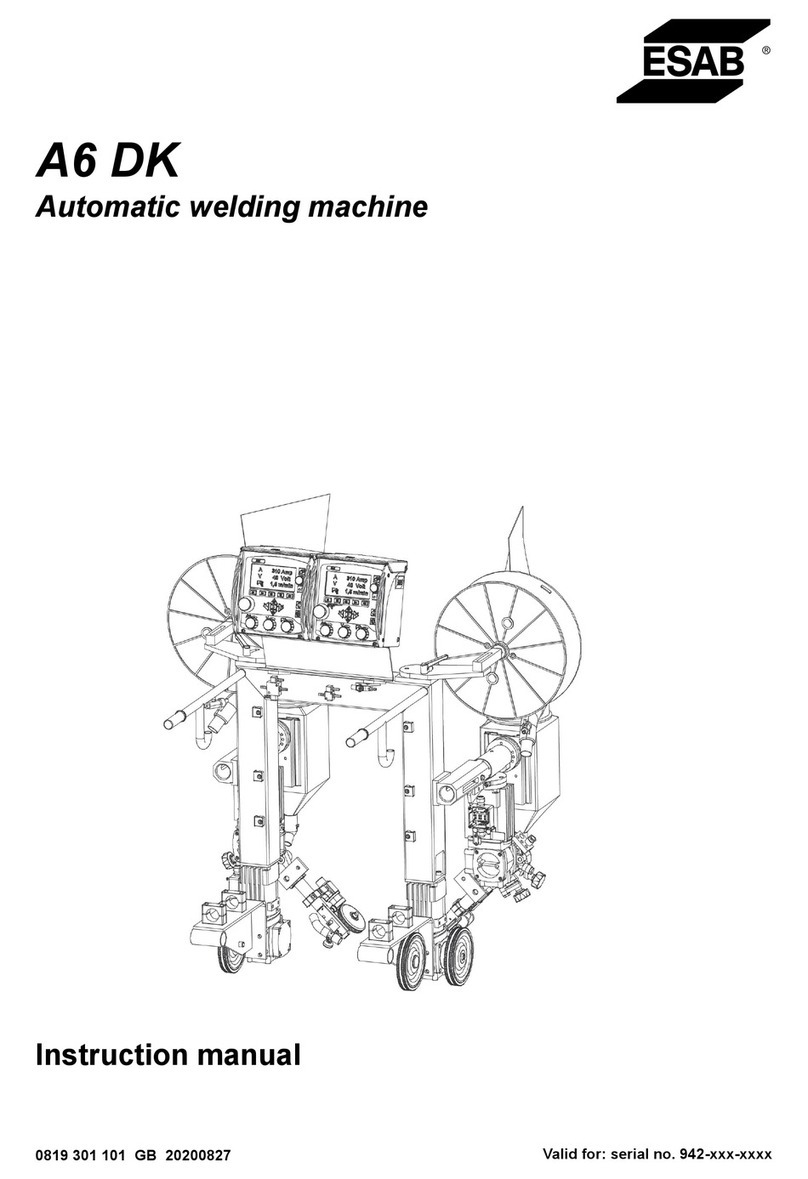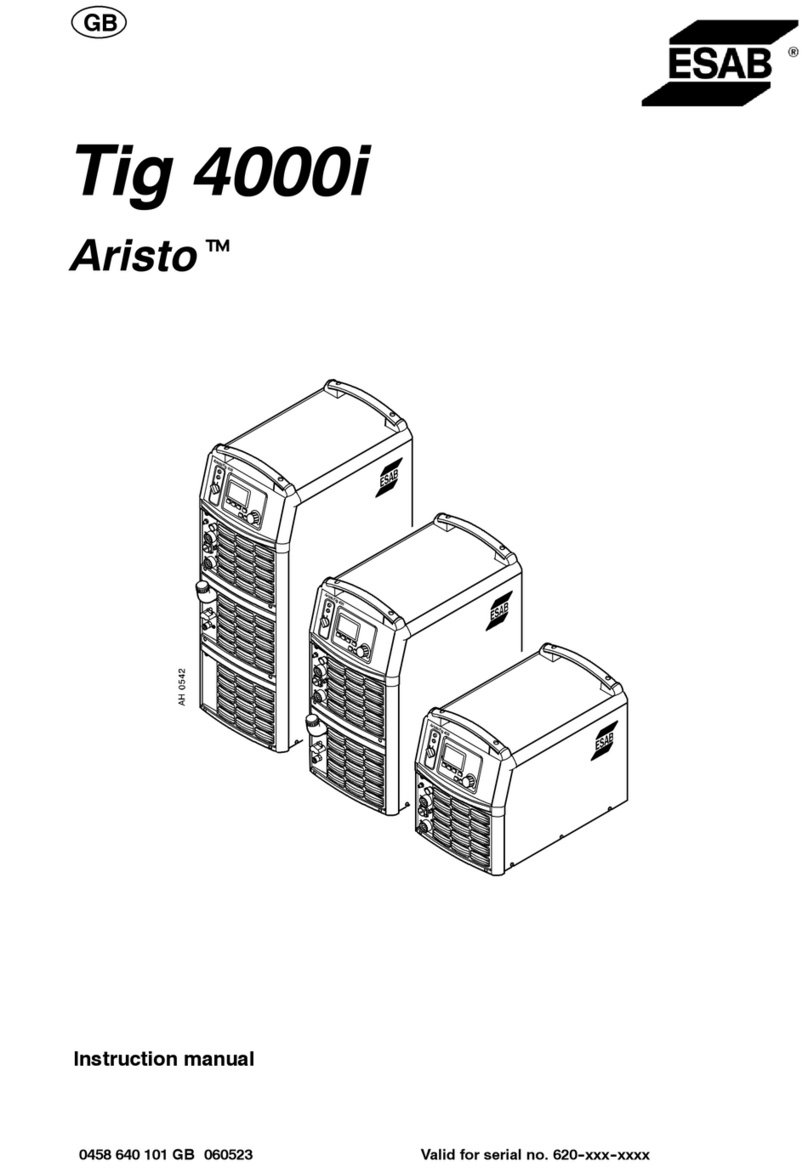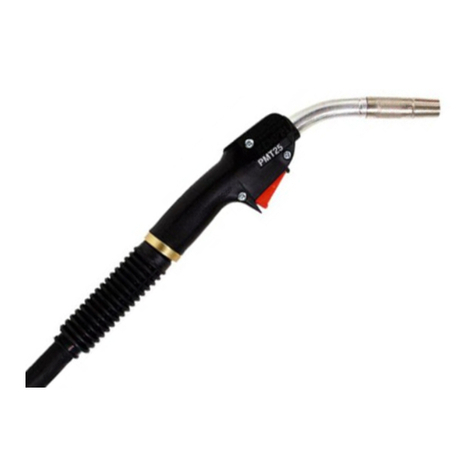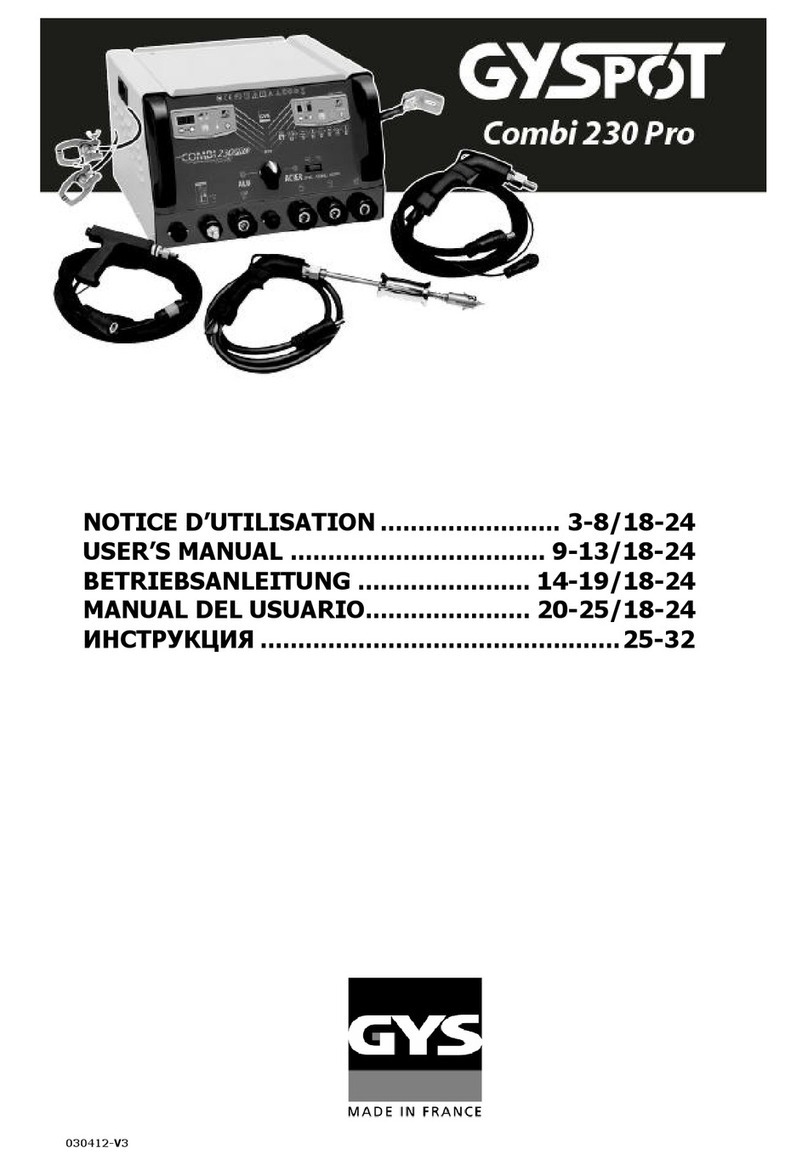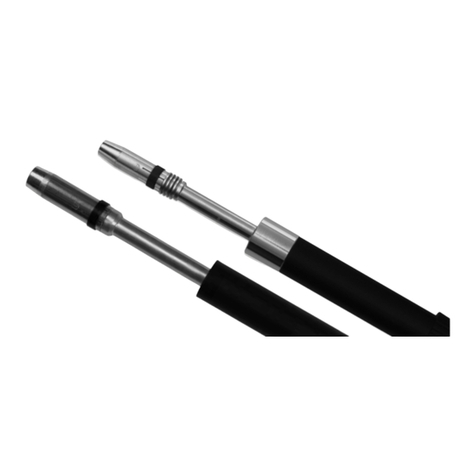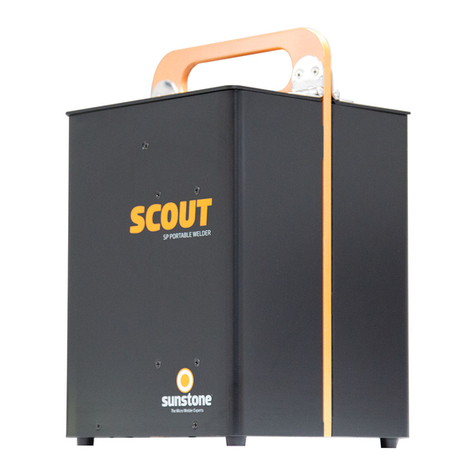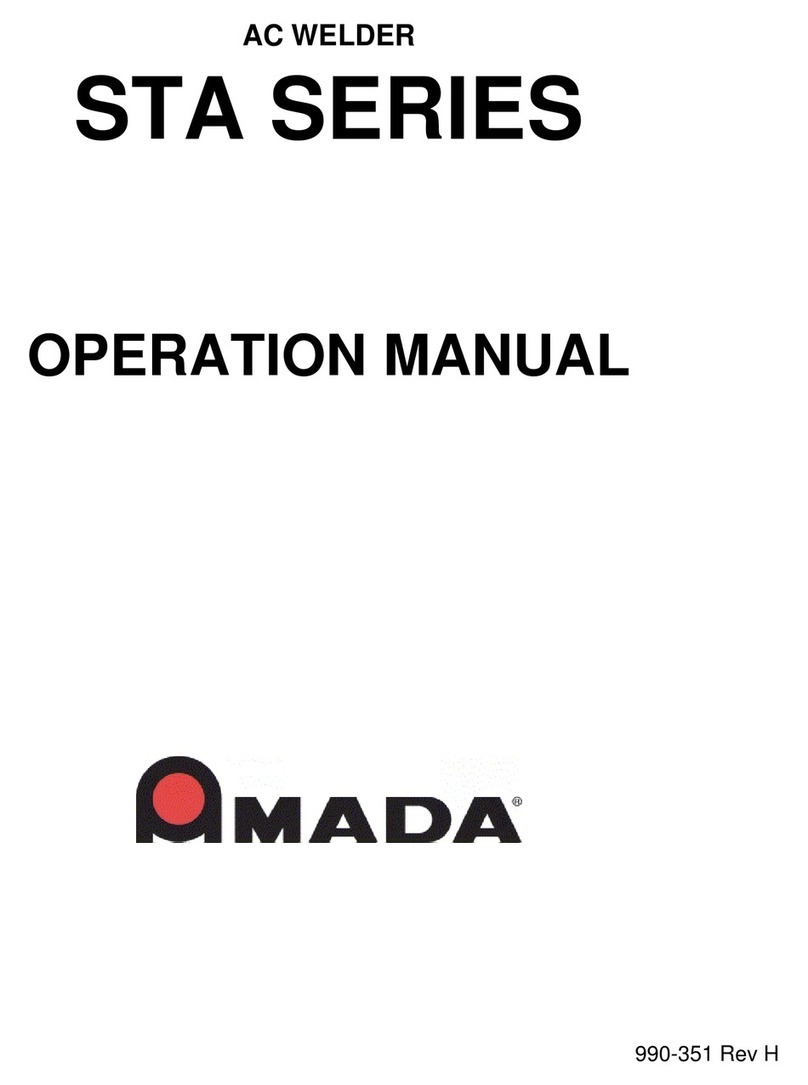
ENGLISH
9
9
ground conductor and double-check the connections thereof.
• Keep supply cords free of oil or grease, and protected from hot
metal and sparks.
• Inspect power input cord frequently regarding damage or bare
cable. Replace cord immediately if damaged – a bare cable
may kill you.
• Do not use cables which are worn-out, damaged, very small-
sized or wrongly connected.
• Do not wrap cables around your body.
• When a grounding clamp is required for an operation, make
ground connection by using a separate cable.
• Do not touch the electrode when you are in contact with the
machine.
• Do not put into contact two electrode carriers that are connected
case there will be an open-circuit double voltage.
• Use equipment in a well-maintained condition. Repair or
accordance with the manual.
• Use safety braces to prevent you from falling down when
• Keep all panels and covers in place.
• Put the clamp of the work cable in good metal-to-metal contact
to the work or the work table as close as possible to the weld
as it is practical.
• Keep or isolate the grounding clamp when it is not connected
to the workpiece to avoid any contact with any metal or any
grounded article.
• Isolate the grounding bracket when not connected to the
workpiece to prevent it from contacting any metal article.
►HOT PARTS may cause serious burns.
• Do not touch hot parts with your hand without glove.
• Allow that there is a cooling period before working at the
machine.
gloves, with insulation for welding and clothing to prevent
burns.
►SMOKE and GASES may be dangerous.
Welding produces smoke and gases.
Breathing in these gases and smoke may be dangerous for your
health.
• Keep your head out of the smoke. Do not breathe in smoke.
local ventilation in front of the arc to remove welding smoke
and gases.
• When ventilation is bad, use an authorized respirator.
metals, consumables, coatings, cleansers, degreasing agents.
• Do work within a closed space only if it is well ventilated or
while using an air respirator. Always have a trained person
near. Welding smoke and gases may displace air and reduce
air for breathing is safe.
• Do not weld at locations near to operations involving grease,
cleaning or spraying paint. Heat and bolts of the arc may react
with vapors and form strongly irritating and toxic gases.
• Do not weld on coating materials such as galvanized steel,
lead, or cadmium-coated steel, unless the coating has been
removed from the welding area, the area is well ventilated and
while using a respirator with a source of air.
Coatings of any material containing these elements may
cause smoke being emitted when welding.
►
BOLTS EMITTED BY THE ARC may burn your eyes and skin.
Bolts emitted by the arc of a welding process produce intense
heat and strong ultraviolet rays that may burn eyes and skin.
protect your face and eyes while welding or looking, cf. safety
standards ANSI Z249.1, Z175, EN379.
• Use authorized safety goggles having lateral protection.
• Use protective screens or barriers to protect others from
arc.
material (leather, thick cotton or wool) and protection for your
feet.
►WELDING may cause re or explosion.
Welding on a closed container such as tanks, drums or tubes
and burns. Accidental contact of the electrode with metal articles
make sure that the area is safe before starting any welding.
m from the welding arc. When this is not possible, cover it tightly
with authorized covers.
• Be alert to that weld sparks and hot materials from the welding
areas.
be seen.
• Do not weld within closed receptacles such as tanks or drums
or piping unless they have been prepared appropriately in
accordance with AWS F4.1.
dust, gas or vapors from liquids (such as gasoline).
• Connect the work cable to the work area as near as possible
to the place where you will be welding, in order to prevent
welding current from long possibly traveling through unknown
• Do not use welding to deice frozen pipes.
• Remove the electrode from the electrode carrier or cut the
welding wire close to the contact pipe when you are not using it.
• Use protective clothing without oil, such as leather gloves,
heavy shirt, closed trousers without patches, high shoes or
boots and a cap.
• Keep any fuel as butane lighters or matches away from you,
before starting to weld.
• After completing work, inspect area to make sure that it is free
• Only use correct fuses or circuit breakers. Do not put ones of
larger size or pass them by one side.
• Follow the regulations in OSHA 1910.252(a) (2) (iv) and NFPA
and an extinguisher.
►FLYING METAL OR SLAG may injure eyes.
• Welding, grinding, wire brushing or polishing may produce
release slag.
• Use authorized safety goggles with lateral guards down to
underneath your mask.














